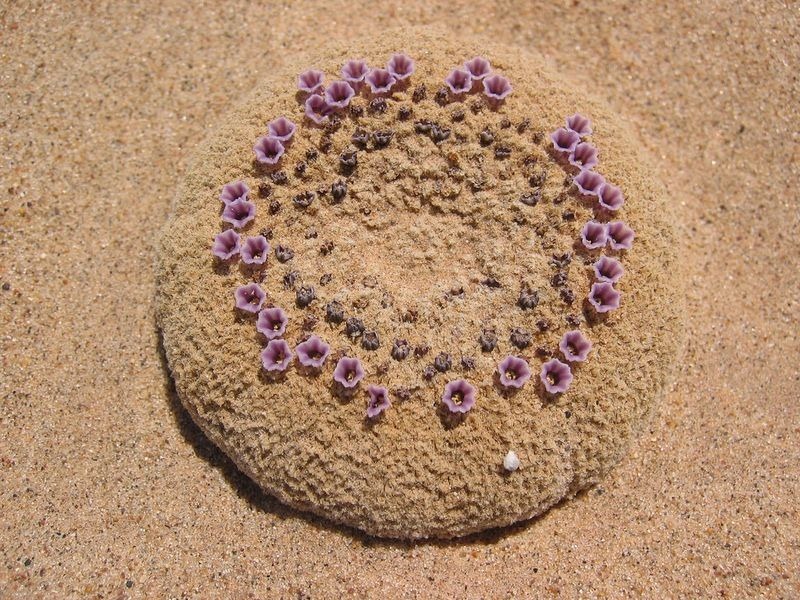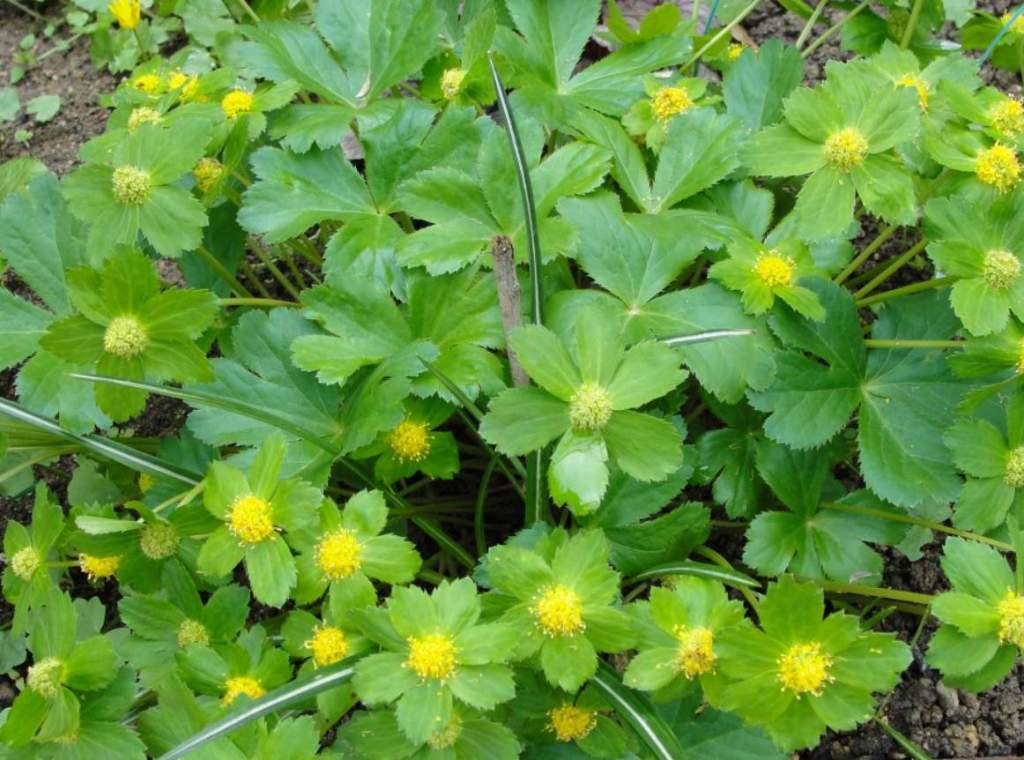It is commonly observed that nature is extremely strange. The naked eyes sometimes nonplus the human beings. In North America, the flower Pholisma sonorae is the most bizarre wildflower, normally known as sand food. Pholisma sonorae normally grows out of sand dunes, with fleshy stems. The flower stretches two meters below the surface and emerges in a small, rounded, or ovate form.
Therefore, if adequate sand is blown away, the upper part of the stem may get exposed and look like a mushroom. However, in the spring season, the round head bears small, centimeter-wide flowers that are purple to pink in color with white margins.
Pholisma sonorae is a rare and unusual species of flowering plant. It is endemic to the Sonoran Deserts to the west of Yuma, Arizona in the California Yuha and the Colorado Desert, and south in the Yuma Desert. Here, it is known from only a few locations. The flower lacks chlorophyll to survive and joins the roots of numerous desert shrubs to get nutrients.
Although, the primary host plants do not suffer from Pholisma infestation,. Even in many cases, the Pholisma plant’s weight is greater than that of primary plants. So, naked eyes are extremely puzzled when seeing this natural wonder of nature. Hence, it is extremely remarkable when the seedlings of these strange root parasites are even able to find the host root buried deep in the sand.
Pholisma sonorae is an extremely rare wonder of nature and is only found in a few locations in the Algodones Dunes of southeastern California and nearby Arizona, and in the sand dunes of El Gran Desierto in Sonora, Mexico. The Native American tribes used to eat their fleshy stems, either raw or roasted over a campfire, including the Cocopah and the Hia C-ed O’odham.
A closely related species is Pholisma Arenarium. It has the same parasitic behavior and does this by sending out pilot roots, about two feet below the sand surface. However, when they reach the vicinity of a host shrub,. The pilot roots send out special “haustorial roots” that generally connect and penetrate the host root.
Moreover, the haustorial connection absorbs carbohydrates and amino acids generated by the photosynthetic host shrub, or this plant may be assisted by other factors. Such frequently shifting sand dunes support the seeds as they travel further down into the sand. Even so, they may be carried by harvester ants and by rodents that burrow into the dunes under host shrubs.
With the passage of time, urban development restricts the plant. And it’s declining their habitats of shifting dune sands, lost to development, and damaged by off-road vehicle use.
Also Read: The Tree of Life











